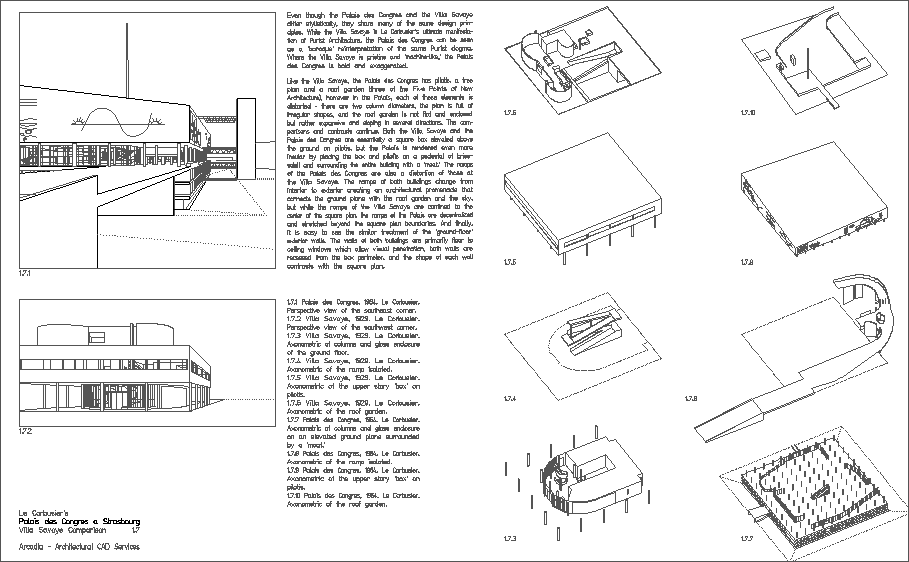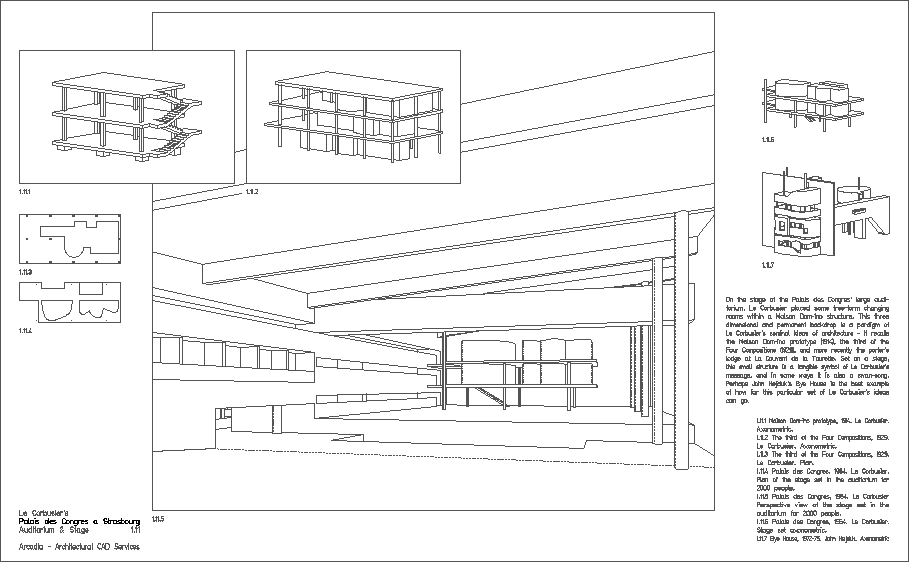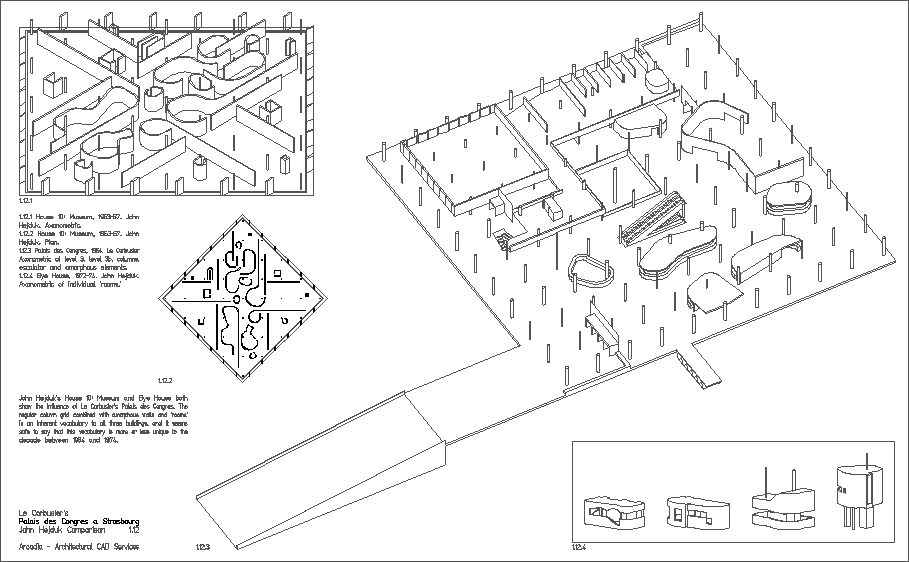dossier | transformations |
1991 |
|
Even though the Palais des Congrès and the Villa Savoye differ stylistically, they share many of the same design principles. While the Villa Savoye is Le Corbusier's ultimate manifestation of Purist architecture, the Palais des Congrès can be seen as a 'baroque' reinterpretation of the same purist dogma. Where the Villa Savoye is pristine and 'machine-like', the Palais des Congrès is bold and exaggerated.
|
|
| On the stage of the Palais des Congrès' large auditorium, Le Corbusier placed some free-form changing rooms within a Maison Dom-ino structure. This permanent 3-dimensional backdrop is a paradigm of Le Corbusier's seminal ideas of architecture--it recalls the Maison Dom-ino prototype (1914), Composition Three (1929), and more recently the porter's lodge at La Couvent de la Tourette. Set on a stage, this small structure is a tangible symbol of Le Corbusier's message, and, in some ways, it is also a swan song. Perhaps John Hejduk's Wall House 2 is the best example of how far this particular set of Le Corbusier's ideas can go. |
|
| John Hejduk's House 10: Museum and Wall House 2 both show the influence of Le Corbusier's Palais des Congrès. The regular column grid combined with amorphous walls and 'rooms' is an inherent vocabulary to all three buildings, and it seems safe to say that this is a vocabulary unique to the decade between 1960 and 1975. |
www.quondam.com/37/3761b.htm | Quondam © 2018.04.24 |


